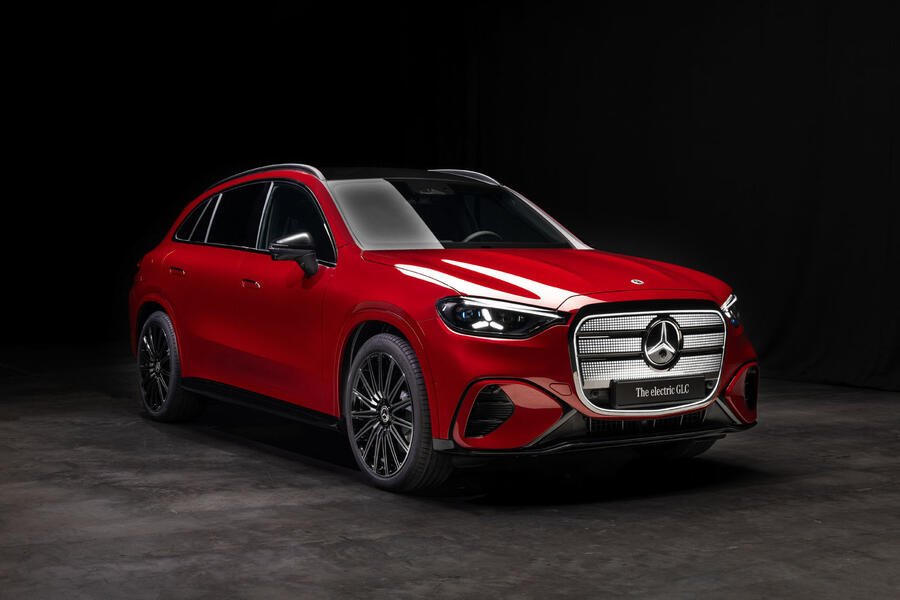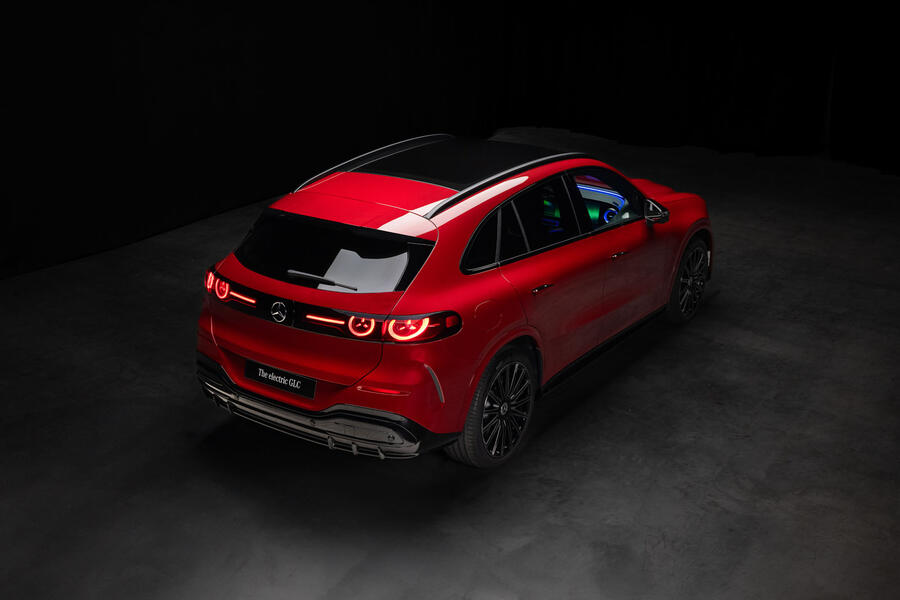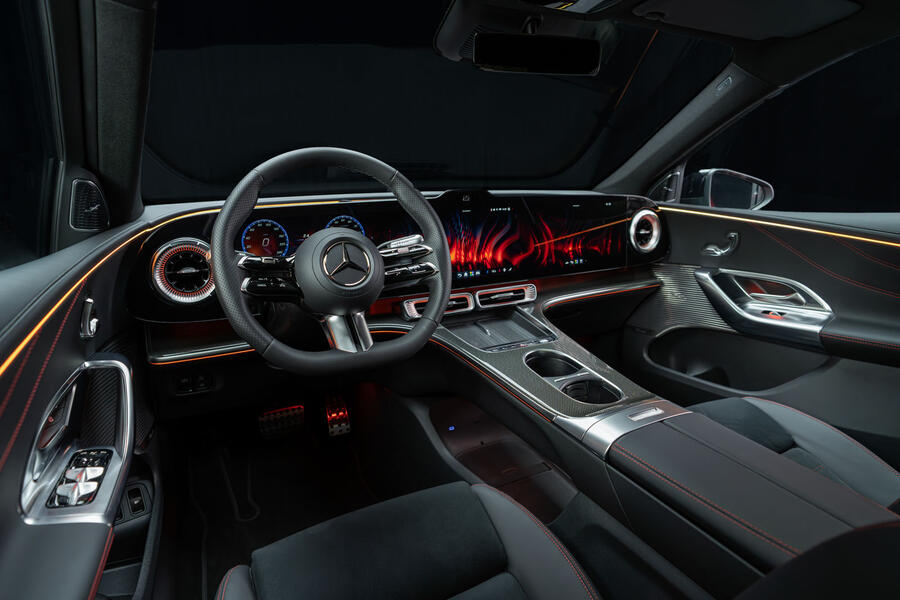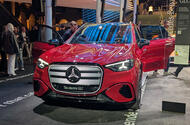Best-seller goes electric with next-gen grille and dashboard-sized infotainment touchscreen
The new electric Mercedes-Benz GLC will go on sale early next year to start what CEO Ola Källenius has called “the biggest product offensive†in the company’s history.
Named the GLC with EQ Technology, the SUV is effectively a successor to the EQC. While that car was given its own name and styling, the new EV shares its title and general design language with the existing combustion-engined GLC, although the two models use different platforms.
The GLC is Mercedes’ best-selling car and sits in the premium SUV segment that Källenius sees as “the most important†to the firm.
The electric version uses the new MB.EA bespoke EVÂ platform, which is designed for medium to large cars and has an 800V electrical architecture that allows for fast charging.
It also runs the latest version of the firm’s MB.OS infotainment software.
While the GLC EQ is all-new, it’s designed to closely resemble the existing GLC, explained Källenius: “If you were told this was the next-gen combustion GLC, you would say ‘yes, it’s the next logical step: it looks like a GLC’.â€
The front is dominated by Mercedes’ new electric-only ‘Iconic Grille’, which is a larger and more upright design than on previous EVs.
The GLC EQ is broadly the same length as the ICE GLC, but its 2972mm wheelbase is 80mm longer – and nearly 100mm longer than the old EQC’s.

Källenius said the decision to stretch the wheelbase was taken “because we canâ€, adding: “You do it because you get extra space inside for free.
Compared with the ICE GLC, it has more leg room in the front and rear and increased head room, plus it offers a 570-litre boot and large 128-litre frunk.
While the GLC EQ will be offered with five different power outputs, it will arrive first in range-topping 400 form, with 483bhp. This features a dual-motor powertrain, including a new permanent magnet synchronous motor on the rear axle and a new front motor that can disconnect when not required.
It also uses a two-speed gearbox, featuring gears with 11:1 and 5:1 ratios to maximise both acceleration and efficiency.
Källenius said that the rear bias of the powertrain is “desirable for any car that is somewhat focused on performance, and you get that for free with an EVâ€.
Power is drawn from a sizeable 94kWh nickel-manganese-cobalt battery, which gives the GLC 400 EQ a claimed range of more than 435 miles.
Because of the 800V system, the battery can be charged at speeds of up to 330kW. As with the new CLA EQ, a DC converter will be offered “on a country-specific basis†to allow use of 400V public chargers – the most common type.

The suspension is a multi-link set-up both front and rear. Optional air suspension can lower the car on faster roads to reduce drag and consequently boost range, while optional rear-wheel steering reduces the car’s turning circle of 11.2m.
Another development is a new ‘one-box’ brake system that integrates energy regeneration and friction braking into a single system.
Four levels of regen are available, with the most aggressive able to recuperate around 300kW.
A suite of driver assistance systems will also be offered, including a ‘transparent bonnet’ function for off-roading.
Intended to fuse “analogue luxury†with “digital eleganceâ€, the GLC EQ’s interior features a large centre console that merges into the instrument panel and revamped air vent and speaker grille designs.

It can be optioned with the largest seamless digital screen yet offered in a Mercedes model. It measures 39.1in, prompting Källenius to quip that “we’ve run out of words to name the screen†– although Mercedes has settled on Hyperscreen.
An optional Vegan Package is claimed to be the fi rst in which all the soft-touch materials are certified by the Vegan Society.
The GLC EQ and other future EVs based on the MB.EA platform will be built at Mercedes’ plant in Bremen, Germany, with additional production in Hungary and China.
It’s due to go on sale in early 2026. Pricing details have yet to be revealed, but the combustion-engined GLC starts at £54,450 and the old EQC latterly cost about £65,000.




